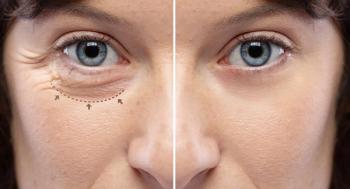
How to approach the out-of-pocket pricing conversation with patients
Editor’s Note: Welcome to “
Patients in need of surgical procedures may experience difficulty coming to terms with the costs that accompany them.
Who
For practices that offer out-of-pocket or private-pay procedures such as premium
The who may be the front desk or billing department, a patient counselor, or the doctor. Ideally, it is all of the above.
I have a large dry eye practice and often recommend thermal pulsation therapy for patients with meibomian gland dysfunction (MGD).
It’s important for the doctor to at least mention pricing with the recommendation, but not get bogged down in the financial details.
Previously by Dr. Matossian:
If I don’t mention the cost at all, patients may think I’m hiding something and become disgruntled when learning the price later on.
I explain that the procedure is not covered by insurance, but that I think it will help them. I also provide a general price range and say that my patient coordinator can discuss the specifics, including benefits and financing options, with them.
Last year, the price for thermal pulsation therapy activators was reduced significantly. We have passed that savings on to patients in my practice. Our adoption rate has gone up significantly, even though I was always a strong advocate for thermal pulsation therapy.
The lower price makes the cost conversation a little easier, and it opens up the possibility of effective treatment for a wider range of patients.
Related:
We strive to have multiple touchpoints with the patient-all with a consistent message that is not only about price, but about what the meibomian glands do or, in the case of MGD, aren’t doing very well.
The technician starts this process when capturing meibography images, talking a little bit about MGD, and what the test measures. I expand on that when I review the meibography and other test results with the patient.
Multiple staff members within the practice are empowered to educate patients about why thermal pulsation therapy can be beneficial.
I firmly believe that patients need to understand the why before you even think about asking them to open their wallets. We discuss how thermal pulsation therapy works and the many published studies showing how it provides sustained improvement in meibomian gland function and dry eye symptoms.
Related:
How
We also are proactive in letting patients know how they can pay for the procedure. My staff doesn’t wait for patients to ask about financing, but immediately offers to accept payment in cash, check, credit, or financing programs.
We offer two different financing options (CareCredit and Alphaeon Credit) because I have found that each has slightly different rules and risk tolerances. Where one might not work for a given patient, the other might.
Master the who, what, why, and how, and your conversations with patients about thermal pulsation therapy and other out-of-pocket procedures will go much smoother.
Newsletter
Don’t miss out—get Ophthalmology Times updates on the latest clinical advancements and expert interviews, straight to your inbox.










































